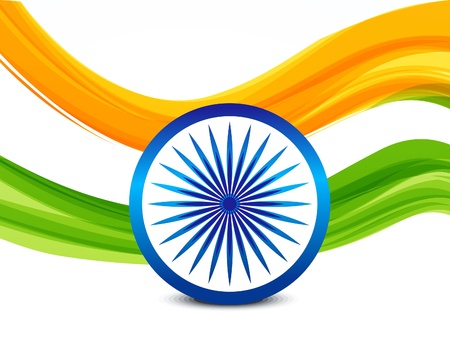Introduction to Indian Festivals and Traditions
India is a land where diversity blooms in every corner, making its culture truly vibrant and unique. With more than 1.4 billion people belonging to different religions, regions, and linguistic backgrounds, the country celebrates a wide range of festivals and upholds ancient traditions that have been passed down through generations. These festivals—be it Diwali, Holi, Eid, Christmas, Pongal, or Onam—are not just days of joy but also serve as strong threads weaving together the social fabric of India. Traditions such as touching elders’ feet for blessings, tying rakhi during Raksha Bandhan, or lighting diyas on Diwali reflect deep-rooted values and beliefs. Understanding these celebrations and customs is essential for anyone who wishes to appreciate India’s rich heritage. This cultural overview will help set the right context as you prepare your PowerPoint slides, ensuring your presentation captures the true essence of India’s festive spirit.
Major Hindu Festivals
When preparing slides on Indian festivals and traditions for a cultural presentation, its essential to highlight the most widely celebrated Hindu festivals. These celebrations are not just religious but also deeply woven into the social and cultural fabric of India. Below is a quick guide to some major festivals, their key rituals, popular greetings, and special foods that are commonly enjoyed across the country.
Diwali: The Festival of Lights
Main Rituals:
- Lakshmi Puja (worship of the goddess of wealth)
- Lighting diyas (oil lamps) and bursting firecrackers
- Decorating homes with rangoli (colourful patterns)
Common Greeting:
“Happy Diwali” or “Shubh Deepavali”
Special Foods:
- Laddoo, barfi, jalebi (sweets)
- Samosa, kachori (savory snacks)
Holi: The Festival of Colours
Main Rituals:
- Playing with coloured powders and water
- Holika Dahan (bonfire on the eve of Holi)
Common Greeting:
“Happy Holi” or “Holi Hai!”
Special Foods:
- Gujiya (sweet dumpling)
- Bhaang thandai (a festive drink)
Navratri: The Nine Nights Festival
Main Rituals:
- Fasting and offering prayers to Goddess Durga
- Dandiya Raas and Garba dances in the evening
Common Greeting:
“Happy Navratri” or “Shubh Navratri”
Special Foods:
- Kuttu ki puri, sabudana khichdi (fasting foods)
- Sweets made from milk and dry fruits
Comparison Table of Major Hindu Festivals
| Festival | Main Rituals | Popular Greeting | Special Foods |
|---|---|---|---|
| Diwali | Lakshmi Puja, lighting diyas, rangoli | Shubh Deepavali | Laddoo, barfi, samosa |
| Holi | Colours play, Holika Dahan bonfire | Holi Hai! | Gujiya, bhaang thandai |
| Navratri | Puja, fasting, Garba dance | Shubh Navratri | Kuttu ki puri, sabudana khichdi |
This overview will help you design PowerPoint slides that not only introduce Indian culture but also engage your audience with local greetings, rituals, and traditional foods. Including such cultural details ensures your presentation resonates with an Indian audience.

3. Festivals of Other Religions
India is a land where people from different religions coexist and celebrate each other’s traditions with great enthusiasm. For your PowerPoint slides on Indian festivals and traditions, it is essential to include major festivals from religions apart from Hinduism, as this reflects the true spirit of India’s unity in diversity.
Eid-ul-Fitr
Eid-ul-Fitr marks the end of Ramadan, a month of fasting for Muslims. It is celebrated with prayers at mosques, delicious foods like biryani and seviyan, and exchanging greetings such as “Eid Mubarak.” Sharing food and joy with neighbours, regardless of their faith, is a common Indian tradition during Eid.
Christmas
Christmas is celebrated by Christians across India on December 25th. Traditions include decorating Christmas trees, attending midnight mass, singing carols, and sharing sweets like plum cake. It is common to wish “Merry Christmas” even among non-Christians, showing India’s inclusive culture.
Gurpurab
Gurpurab refers to the birthdays of Sikh Gurus, especially Guru Nanak Jayanti. On this day, Sikhs visit Gurudwaras, participate in processions called Nagar Kirtans, and share langar (community meals). The greeting “Sat Sri Akal” is widely exchanged, and people from all communities join the celebrations in Punjab and beyond.
Pongal
Pongal is a major harvest festival in Tamil Nadu celebrated by Tamils worldwide. It marks gratitude for nature’s bounty and includes rituals like boiling the first rice of the season. Special dishes are prepared and shared with everyone, symbolizing abundance and goodwill. The greeting “Pongal-o-Pongal!” echoes throughout the festivities.
Inclusive Greetings and Cross-Community Celebrations
Indians often use greetings specific to each festival—like “Eid Mubarak,” “Merry Christmas,” or “Happy Pongal”—regardless of their own religion. Slides should highlight how schools, offices, and neighbourhoods organize cross-cultural events, fostering communal harmony. Including these points in your presentation will give an authentic view of Indian social fabric and help your audience understand the importance of inclusivity in celebrating festivals across communities.
4. Family Traditions and Social Customs
Understanding Indian festivals and traditions goes beyond the public celebrations—it’s rooted in everyday family customs and social practices. If you are preparing slides on Indian Festivals and Traditions in PowerPoint for a cultural presentation, it’s essential to showcase the significance of these daily rituals that define Indian society. Here are some core customs to highlight:
Touching Elders’ Feet (Pranam)
One of the most respected traditions in India is seeking blessings from elders by touching their feet. Known as pranam, this gesture is not only a sign of respect but also symbolizes humility and gratitude. It is commonly practiced during festivals, family gatherings, and even daily routines, especially in traditional households.
Joint Family Gatherings
The concept of a joint family—where multiple generations live under one roof—is still prevalent in many parts of India. Family gatherings during festivals like Diwali, Holi, or Eid bring together relatives from near and far. These occasions strengthen familial bonds and promote values such as sharing, cooperation, and respect for elders. Your PowerPoint slides can include examples or anecdotes to make this relatable for your audience.
Traditional Attire: Sarees and Kurta-Pajamas
Dressing up in traditional attire is an important aspect of Indian culture, especially during festivals and ceremonies. Below is a simple table summarizing popular traditional outfits worn across India:
| Attire | Description | Occasions Worn |
|---|---|---|
| Saree | A long, elegant fabric draped around the body by women. | Festivals, weddings, religious events |
| Kurta-Pajama | A comfortable tunic worn with loose-fitting trousers by men. | Cultural gatherings, poojas, family celebrations |
| Salwar Kameez | A tunic paired with pants and a scarf, popular among women. | Daily wear, festivals, formal occasions |
| Sherwani/Dhoti-Kurta | Formal wear for men; sherwanis for weddings, dhoti-kurta for rituals. | Weddings, religious ceremonies |
Key Takeaways for Your Slides
- Include images or illustrations showing these customs in action to engage your audience visually.
- Add brief explanations or stories behind each tradition to foster understanding.
- If possible, invite an Indian colleague or friend to share personal experiences for authenticity.
By highlighting these everyday traditions and social customs in your PowerPoint presentation, you provide valuable context about what makes Indian culture unique—not just during festivals but in daily life as well.
5. Unique Regional Celebrations
When creating PowerPoint slides for an Indian cultural presentation, highlighting unique regional festivals is a great way to showcase the diversity of India. Each state has its own traditional celebrations that reflect local customs, values, and history. For instance, Onam from Kerala is celebrated with vibrant flower arrangements called Pookalam, elaborate feasts known as Onasadya, and the famous Vallam Kali boat races. This harvest festival signifies prosperity and unity among Keralites. Moving north, Baisakhi in Punjab marks the Sikh New Year and the harvest of Rabi crops. It features energetic Bhangra dance performances and community fairs that bring people together in gratitude.
Durga Puja in Bengal
One of the grandest festivals in Eastern India is Durga Puja. Held annually in West Bengal, it honours Goddess Durga’s victory over evil. The city of Kolkata transforms with stunning pandals (temporary structures), artistic idols, and cultural programs. This festival is not just a religious event but also a social celebration where art, music, and food play central roles.
Cultural Importance of Regional Festivals
In your PowerPoint slides, you can emphasise how these regional festivals are more than rituals—they foster community bonding and preserve cultural heritage. Including local terms like ‘Pookalam’, ‘Langar’ (community meal during Baisakhi), or ‘Sindoor Khela’ (a ritual during Durga Puja) adds authenticity to your presentation. These celebrations highlight India’s pluralism and offer audiences a glimpse into the country’s rich tapestry of traditions.
Tips for Effective Slides
To make your slides impactful, use regional symbols, maps showing festival locations, and key vocabulary in English along with local language terms. Briefly describe the significance of each festival and share interesting facts or anecdotes to engage your audience.
6. Modern Trends in Celebrating Traditions
In recent years, the celebration of Indian festivals and traditions has experienced significant changes due to urbanization, social media influence, and evolving lifestyles. When preparing your slides on Indian festivals and traditions in PowerPoint for a cultural presentation, it is important to highlight these modern trends as they reflect the dynamic nature of Indian society.
Urbanization and Its Impact
With more people moving to cities, traditional ways of celebrating festivals are adapting to fit fast-paced urban life. For example, apartment complexes often organize community celebrations for Diwali or Holi, allowing residents from diverse backgrounds to join together. This shift encourages inclusivity but sometimes means that age-old customs are simplified or modified to suit city living.
The Role of Social Media
Social media platforms like Instagram, Facebook, and WhatsApp have transformed how Indians share festival experiences. It is now common to see families posting photos of Rangoli designs during Pongal or sharing live videos of Ganesh Chaturthi processions. Social media not only helps people stay connected with their roots but also spreads awareness about lesser-known regional festivals across the country and even internationally.
Changing Lifestyles and New Expressions
The modern Indian lifestyle often includes a busy work schedule and exposure to global influences. As a result, some traditional rituals are shortened or adapted for convenience—like hosting virtual pujas over Zoom or sending e-greetings for Raksha Bandhan instead of physical cards. Despite these changes, the core spirit of unity and joy remains strong.
Suggestions for Your Presentation Slides
To make your PowerPoint slides engaging and relevant, consider including examples of how young Indians combine tradition with technology, such as online workshops for making eco-friendly Ganesha idols or digital invitations for wedding ceremonies. Mentioning these trends will help your audience understand how Indian culture remains vibrant while embracing modernity.
Pro Tip for Beginners
If you are new to making cultural presentations, use simple visuals and real-life stories from social media posts or news articles to illustrate these modern trends. This approach makes your content relatable and up-to-date, ensuring your audience connects with both the heritage and contemporary spirit of Indian festivals.
7. Conclusion and Cultural Etiquette Tips
Key Takeaways from Your PowerPoint on Indian Festivals and Traditions
Your PowerPoint slides on Indian festivals and traditions offer a vibrant overview of the country’s rich cultural diversity. From Diwali’s sparkling lights to Holi’s colour splashes, and from Eid’s togetherness to Christmas carols, each festival brings unique stories, rituals, and community bonding moments. By showcasing important customs, regional variations, and the spirit behind every celebration, your presentation helps audiences understand the heart of India’s culture.
Do’s for Respectful Participation
- Dress Appropriately: Choose modest attire, especially when visiting temples or joining traditional events. For women, wearing a salwar kameez or saree is appreciated; men can opt for kurta-pajama or formal shirts with trousers.
- Join in Wholeheartedly: Participate in rituals like lighting diyas during Diwali or applying gulal during Holi if invited. It shows respect and enthusiasm for local traditions.
- Follow Local Customs: Observe how locals greet each other—like saying “Namaste” with folded hands—and try to use these greetings yourself.
- Respect Dietary Preferences: Many Indian festivals include special foods; always check if vegetarian or non-vegetarian food is being served before accepting or offering dishes.
Don’ts to Keep in Mind
- Avoid Disrespecting Religious Symbols: Do not touch religious objects or idols unless permitted. Remove shoes before entering homes, temples, or mosques.
- No Loud Criticism: Avoid making negative remarks about customs or food. If you’re unsure about something, ask politely rather than criticising.
- No Photography Without Permission: Many rituals are private; always ask before taking photos, especially inside places of worship.
Final Thoughts
Indian festivals and traditions are best experienced with an open mind and heart. Use your PowerPoint slides as a bridge to foster understanding and appreciation among your audience. With these do’s and don’ts in mind, you’ll not only make your cultural presentation more authentic but also demonstrate genuine respect for India’s incredible heritage. Enjoy learning, sharing, and celebrating together!


